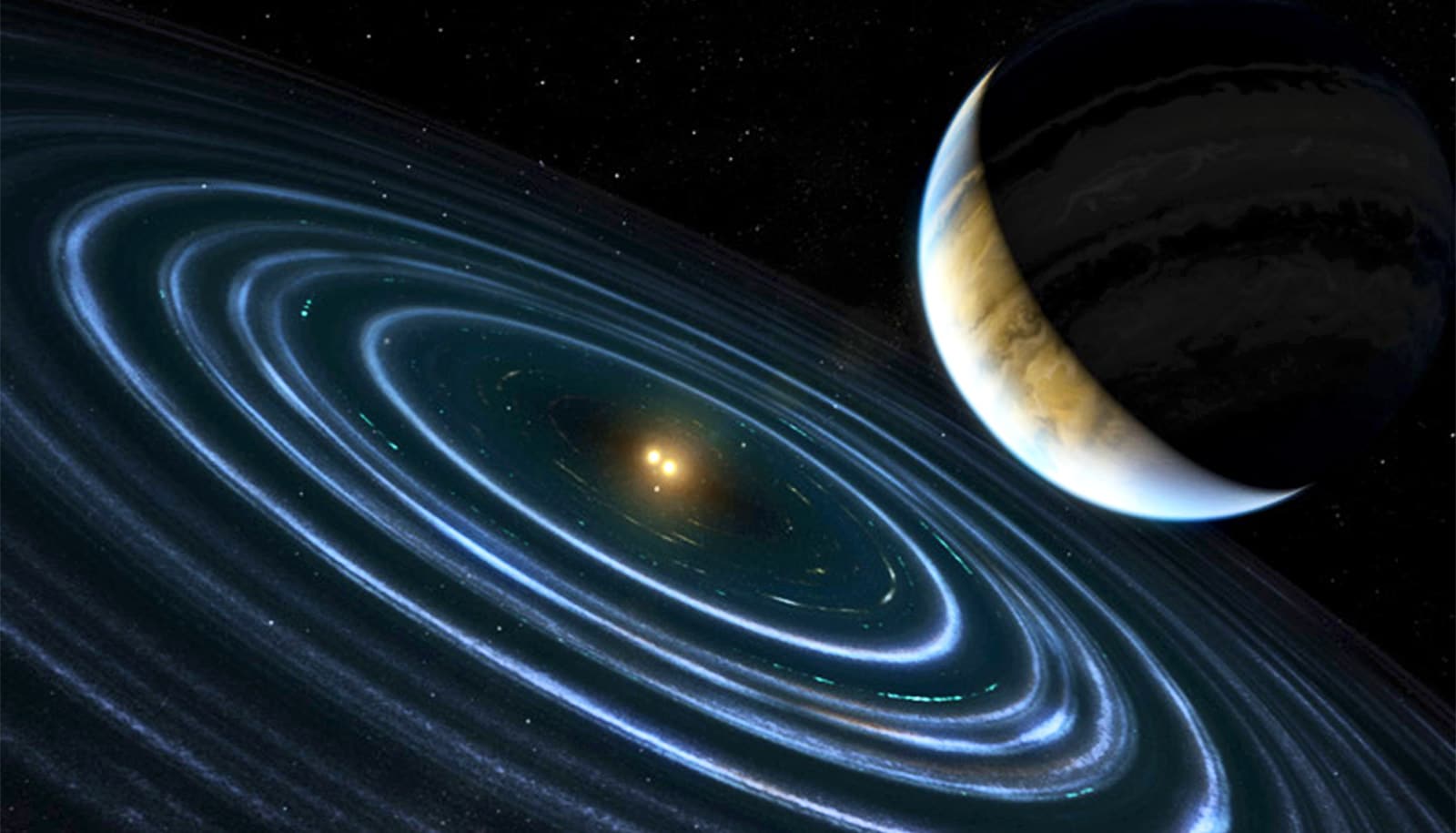Planetary systems around binary stars may be very different from those around single stars, according to new research.
The findings point to new targets in the search for extraterrestrial life forms.
“The result is exciting since the search for extraterrestrial life will be equipped with several new, extremely powerful instruments within the coming years. This enhances the significance of understanding how planets are formed around different types of stars,” says Jes Kristian Jørgensen, a professor at the Niels Bohr Institute at the University of Copenhagen who’s heading the project.
“Such results may pinpoint places which would be especially interesting to probe for the existence of life.”
A young binary star
The researchers made the new discovery based on observations from the ALMA telescopes in Chile of a young binary star about 1,000 lightyears from Earth, which is a quite short distance in an astronomical context. Formed some 10,000 years ago, it is a very young star.
The two stars of the binary system are 200 astronomical units (AUs) apart. An AU equals the distance from Earth to the Sun. In comparison, the furthest planet of the Solar System, Neptune, is 30 AUs from the Sun.
The binary star system, NGC 1333-IRAS2A, is surrounded by a disc consisting of gas and dust.
The observations can only provide researchers with a snapshot from a point in the evolution of the binary star system. However, the team has complemented the observations with computer simulations reaching both backwards and forwards in time.
“The observations allow us to zoom in on the stars and study how dust and gas move towards the disc. The simulations will tell us which physics are at play, and how the stars have evolved up till the snapshot we observe, and their future evolution,” says second author Rajika L. Kuruwita, postdoc at the Niels Bohr Institute.
Presumably, the duality of the binary star can explain the cyclic pattern. The two stars encircle each other, and at given intervals their joint gravity will affect the surrounding gas and dust disc in a way which causes huge amounts of material to fall towards the star.
“The falling material will trigger a significant heating. The heat will make the star much brighter than usual,” says Kuruwita. “These bursts will tear the gas and dust disc apart. While the disc will build up again, the bursts may still influence the structure of the later planetary system.”
The observed stellar system is still too young for planets to have formed. The team hopes to obtain more observational time at ALMA, allowing to investigate the formation of planetary systems.
Comets that carry life’s building blocks
The researchers are also focusing on comets.
“Comets are likely to play a key role in creating possibilities for life to evolve. Comets often have a high content of ice with presence of organic molecules. It can well be imagined that the organic molecules are preserved in comets during epochs where a planet is barren, and that later comet impacts will introduce the molecules to the planet’s surface,” says Jørgensen.
Understanding the role of the bursts is important in this context. “The heating caused by the bursts will trigger evaporation of dust grains and the ice surrounding them,” Jørgensen says. “This may alter the chemical composition of the material from which planets are formed.”
Therefore, chemistry is a part of the research scope, too. “The wavelengths covered by ALMA allow us to see quite complex organic molecules, so molecules with 9-12 atoms and containing carbon,” Jørgensen explains.
“Such molecules can be building blocks for more complex molecules which are key to life as we know it. For example, amino acids which have been found in comets.”
ALMA (Atacama Large Millimeter/submillimeter Array) is not a single instrument but 66 telescopes operating in coordination. This allows for a much better resolution than a single telescope could have obtained .
Very soon the new James Webb Space Telescope (JWST) will join the search for extraterrestrial life.
Near the end of the decade, JWST will be complemented by the ELT (European Large Telescope) and the extremely powerful SKA (Square Kilometer Array) both planned to begin observing in 2027.
The ELT will with its 39-meter mirror be the biggest optical telescope in the world and will be poised to observe the atmospheric conditions of exoplanets (planets outside the Solar System). SKA will consist of thousands of telescopes in South Africa and in Australia working in coordination and will have longer wavelengths than ALMA.
“The SKA will allow for observing large organic molecules directly. The James Webb Space Telescope operates in the infrared which is especially well suited for observing molecules in ice. Finally, we continue to have ALMA which is especially well suited for observing molecules in gas form. Combining the different sources will provide a wealth of exciting results,” Jørgensen says.
The research appears in the journal Nature.
Source: University of Copenhagen



